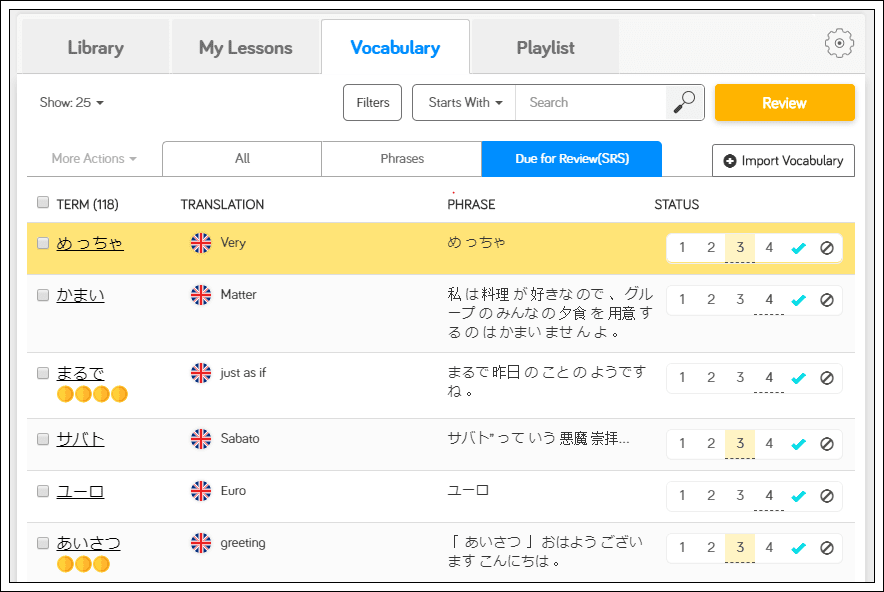Japanese Listening Practice: Resources You Can Use
In July, 2015, a friend invited me over to watch the movie Densha Otoko. My first year in Japan was winding down to a close, and what a year it was! I had went from zero Japanese to being able to enjoy some easy podcasts in Japanese. I was really proud of myself and finishing the year off with my first Japanese movie seemed like a fitting way to wrap things up.
Or at least, it seemed that way up until about 5 minutes into the movie. I understood basically nothing.
Why is it so hard to understand spoken Japanese?
Disappointed as I was at the time, I’ve come to feel that my understanding of the language learning process – and listening comprehension’s place within it – was flawed.
When people say that they’re learning Japanese, they’re not quite telling the truth. Japanese is a stupendously huge thing, much too large to be consumed in a single bite. A more accurate statement is that they’re learning parts of Japanese – grammar points, vocabulary, kanji, so forth. We divide and conquer, starting with things small and tangible and gradually working our way up.
Whereas these things are singular and straightforward tasks, listening comprehension is a holistic skill that is comprised of many smaller skills. Just like you aren’t really “learning Japanese”, you also aren’t really just “watching a movie” or “listening to a podcast”. You’re doing a lot of things at once, and some of those things are probably things you haven’t quite conquered yet.
The first thingto get your head around is what listening really is.
What is listening comprehension, really?
At its core, listening comprehension is about being able to take in information. Some of that information is physical (what your mouth, nose and vocal chords are doing), some of it is emotional (tone, word choice), some of it is cognitive (being able to follow ideas) and some of it is perceptive (being able to understand what isn’t said).
The reason that you don’t understand something will differ for each piece of audio. From now on, every time you don’t understand something you hear, your job is to ask yourself one question:
Why don’t I understand this?
Phonetics: Recognizing Japanese as Japanese
Phonetics, the ability to correctly interpret what you hear, is the most fundamental aspect of listening comprehension. If you can’t recognize the sounds しんかんせん as being しんかんせん then that meaning will be lost on you even if you understood everything else in the sentence. Part of phonetics is stuff like vowels and consonants, which you might have heard of, but on a more practical level, it’s more about being able to understand how Japanese strings words together.
To give an example of what I mean by “stringing words together”, consider the English phrase “Japanese is one heck of a language”. Do you actually say, Japanese. Is. One. Heck. Of. A. Language? No! That would sound strange. It’s difficult to understand native speakers because the sounds coming out of their mouths go way beyond what’s in the subtitles.
To get back to Japanese, consider the following:
Do you hear the difference between うまい and うまく? This is pitch accent.
Do you actually hear an “う” sound at the end of です? This is vowel devoicing.
Is Japanese の identical to English no? No! The difference is dipthongs, /no/ vs /noʊ/.
If what you are seeing doesn’t quite match what you’re hearing, figure out why. You don’t have to master all the little details now, just be aware of them and start to think about what you’re actually hearing.
Vocabulary: Building with those phonetic blocks
Vocabulary is what happens when you start putting phonemes together. Listening comprehension doesn’t end at hearing [ɕi/ŋka\ɴseɴ] and recognizing it as being the Japanese word しんかんせん – you’ve also got to know what the word means.
Thankfully, vocabulary acquisition is pretty straightforward. You’ll naturally improve your vocabulary just by spending time with Japanese, so find content that is interesting to you and keep at it. For example, the lyrics of your favorite music or even from the dialogue of your favorite anime.
But organizing your content can be tiresome. That’s why there’s LingQ, the best way to learn Japanese online because it lets you learn from content you enjoy!
As you can see below, I’ve imported an episode from one of my favorite anime, Shirokuma Cafe. Not only does LingQ import audio to help you with your Japanese listening practice, it also imports the dialogue as well! This way, you can easily read, look up words, and save them for review.

LingQ automatically keeps track of the vocabulary you look up and then organizes them into an SRS for you. This means that all you’ve got to do to develop a great vocabulary is keep enjoying yourself and ensures that every single vocabulary word you spend time learning will be useful.

Resources that are perfect for Japanese listening practice
I personally love all these little details and think theory is great, but ultimately, this type of stuff is just one stage of the learning loop – awareness. The other stages – planning, action, results and reflection – are equally important. The right amount of theory is just enough to get the ball rolling and give you something to focus on. I suggest progressing through content as you normally would, but “highlighting” one new concept to listen out for.
If you aren’t already following something, pick one of the below podcasts. While consuming the content, listen specifically for how they say です and ~ます. Does it match how you’re saying it? If so, great! If not, why not? What do you need to change to sound more natural.
NHK Easy News is the perennial suggestion given to people beginning to listen to Japanese content. It is, literally, easy news – the same stuff you’d read in a normal newspaper, just in simpler language.
News in Slow Japanese is similar to NHK Easy News in that each episode features a clearly pronounced, short Japanese text, but its content tends to be more light-hearted. Go to NHK for real news, go here for poodle police dogs and shaved ice.
For those seeking more lesson-like content, NHK Easy Japanese is the place to go. Each of the 48 dialogues is clearly narrated and focuses on a simple grammar point. Furthermore, because everything in this series is so fundamental, it’s also what I would suggest starting with for those wanting to work on their pronunciation.
If you’re sick of drier academic content, I’d like to put forward 怪異伝播放送局 (Strange Stories on the Radio). The channel updates very regularly and its 5-10 minute long episodes are the perfect length to be squeezed in whenever you’ve got a few minutes throughout the day.
I always go to scary stories when I begin learning a new language because scary is scary, even if the language is simple. (Note: Many of the stories on the channel are more “creepy” than “scary”). As a plus, the narrator reads so clearly that the generated transcripts are very accurate. Perfect for importing into LingQ!
If you’d like to begin reading in Japanese but can’t find an interesting book, there’s no better place to go than 文学YouTuberベル (Bell)! Bell makes YouTube videos where she talks about books that she has read, and so far as books go, it’s sort of an all-in-one channel. Unlike the exaggerated or robotic voices in earlier content, this channel features very natural Japanese and most of the newer videos are fully transcribed.
The final channel I’d like to recommend is 書道家 東宮たくみ (Takumi the Calligrapher). I’ve linked a video where Takumi breaks down the do’s and don’ts of writing beautiful hiragana and, though you might be a bit dubious, I think this is a super place to begin your listening comprehension studies. Given the nature of calligraphy, Takumi spends the entire video demonstrating what he is narrating, so these videos are a bit easier to follow than other content aimed at native Japanese speakers. The video is also chock-full of useful little phrases you can learn to help with your own explanations like そしてーand then or 続いて (つづいて)ーnext/from there, not to mention improving your handwriting!
Listening comprehension starts with pronunciation and vocabulary, but it can be stretched much further out. Having a perfect ear for phonetics and knowing a million words won’t get you very far if you don’t have the grammar basis to understand how those words are related or the topical background required to follow ideas being developed and strung together. So don’t fret if you get hung up on some details – what’s much more important is being able to step back and appreciate how everything fits together.


